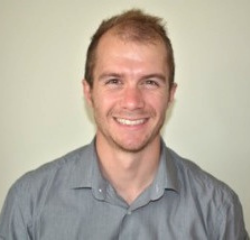
There’s been a steady increase in the number of cardiac physiologists going through the Scientist Training Programme (STP) equivalence process in recent years, said James Willis, Clinical Scientist, at Royal United Hospitals in Bath.
He explained that the route was created for those who had qualified before STP was introduced, and stressed that candidates did not need a master’s degree to apply – just the ability to “evidence your experience at or above the level of an STP graduate”.
The programme is run by the Academy for Healthcare Science (AHCS), in conjunction with the National School of Healthcare Science (NSHS), and the Health and Care Professions Council (hcpc) maintains the register of clinical scientists.
Benefits
Outlining the benefits of becoming a clinical scientist, James said it standardised quality and boosted patient safety, while opening access to National Institute for Health Research (NIHR) grants and career opportunities. “Ultimately, what this gives you is a protected job title. With that comes the responsibility of the regulation, but also the opportunity to have something that's unique within the NHS.”
The practicalities
The equivalence process has two pathways, cardiac imaging and devices, and usually takes about six months. Applications cost £350, which is payable to the AHCS, but various education funds and charitable grants are available.
The process
The process has five stages: application, portfolio assessment, interview, ratification and certification, and hcpc certification.
“The Academy doesn't prescribe a specific length of training before you can apply, however STP graduates spend roughly two years on clinical placement across a number of specialties, with a variety of leaders and clinical training. It is unlikely that periods of experience substantially less than this will be deemed adequate for an application for equivalence,” said James.
“The STP curriculum is a great way to better understand the variety of training graduates undertake and this will help influence your application at each stage.”
Application
The application will include a 1,000-word statement, to include details of previous experience and duties, past and current research, and audit or service development project. Applicants will also be asked to provide two professional referees, and the academy will decide if the application progresses to portfolio stage.
The portfolio consists of a 5,000-word summary along with evidence of experience. “On average, it takes up to six months to complete this, in terms of collecting the evidence that's required,” said James. “It’s a big document so it needs to be well organised.”
A good portfolio will include a contents list, a summary of relevant training and experience a completed Good Scientific Practice (GSP) template, and supporting evidence for each standard listed.
“One of the things that's going to take the largest amount of time is putting together your template. It's a fairly substantial document that covers five main domains, and within each of those domains, there are subsections, all of which you need to be able to provide at least two pieces of evidence for,” said James. The domains are professional practice, scientific practice, clinical practice, research development and innovation, and leadership.
Interview
Following successful portfolio assessment, applicants will be invited to a 30- to 60-minute interview with three assessors. “The chair will be the lay assessor, one will be a clinical scientist, often from another discipline, and one will be from your specific area. They will ask questions about your practice from across all five domains of the GSP, and not solely on your specialist area – so revision is key,” said James.
“The interview is designed to assess your competence in the workplace setting, to ensure that you meet the standards in the GSP document, and that you have the knowledge, skills and competence comparable to someone who's completed the STP programme.”
Afterwards, the assessors will write up their notes and deliver their results to the academy, with successful candidates being informed within 10 days and invited to contact the HCPC.
“Once accepted and approved, your name will appear on the register, and you will have attained the protected title of clinical scientist,” said James. “Congratulations.”
BSEcho 2020 presentations are available on our website for members of the Society.
View the presentations